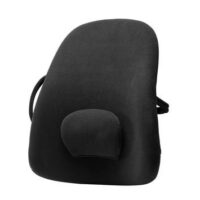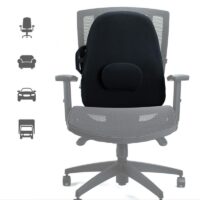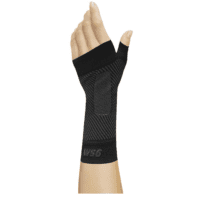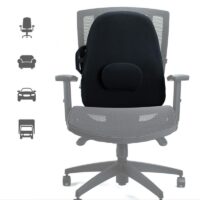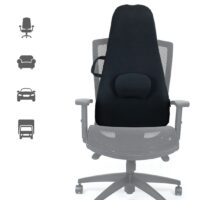Ergonomics
Article by J. Miller, S.Armfield

Ergonomics: Enhancing Your Workplace for Better Health
Why is Ergonomics Important?
Ergonomics is crucial because it helps ensure that your work environment suits your body’s needs. Each person is different in terms of shape, size, and physical capacity. Therefore, a setup that works for one individual might not be suitable for another. This is why an ergonomic assessment tailored to each worker is vital.

How Does Ergonomics Affect You?
Poor ergonomics can lead to discomfort, fatigue, and even injury. Office workers, for example, may suffer from back pain, neck strain, or repetitive strain injuries if their workstations are not set up correctly. By improving ergonomics, you can enhance your comfort and productivity, and reduce the risk of injury.
Who Needs Ergonomic Improvements?
Everyone can benefit from ergonomic improvements, whether you’re an office worker, a manual labourer, or in another profession. Tailoring ergonomic solutions to your specific needs can help you maintain better posture, reduce strain, and work more efficiently.
Where Should You Apply Ergonomics?
Ergonomic principles can be applied in various settings, including offices, factories, and even at home. Anywhere you spend a significant amount of time working or performing repetitive tasks is a candidate for ergonomic evaluation and improvement.
When Should You Consider Ergonomics?
You should consider ergonomics whenever you experience discomfort or pain related to your work environment. Regular ergonomic assessments can also be beneficial to prevent injuries before they occur, ensuring long-term health and productivity.
What Steps Should You Take?
- Assessment: Start with an ergonomic assessment to identify areas that need improvement. This can include evaluating your workstation setup and your posture while working. See Workstation Assessment.
- Adjustments: Make necessary adjustments based on the assessment. This might involve changing the height of your chair, positioning your monitor correctly, or using ergonomic accessories.
- Education: Learn about proper posture and body mechanics. Understanding how to position yourself correctly can prevent many common ergonomic issues.
- Implementation: Put the recommendations into practice and monitor your comfort and productivity. Continual adjustment may be necessary as your tasks or environment change.
New Research on Ergonomics
Recent research highlights the significant impact of ergonomics on workplace health. A systematic review by Oakman et al. (2018) found that ergonomic interventions can reduce the risk of musculoskeletal disorders in the workplace. Another study by Sohrabi M and Babamiri M (2021) demonstrated that office ergonomics training significantly improved workers’ posture and reduced discomfort. These findings underscore the importance of ongoing ergonomic assessments and interventions.

Conclusion
Ergonomics is more than just a buzzword; it’s an essential aspect of workplace health and safety. By understanding the importance of ergonomics and taking steps to improve your work environment, you can enhance your comfort, productivity, and overall well-being.
What to Do?
If you are experiencing discomfort or want to prevent potential injuries, seek professional advice from a physiotherapist. They can provide tailored ergonomic assessments and recommendations to help you achieve a healthier work environment.
Rochedale - Call 38410277
Book Online: RochedaleSalisbury - Call 32751044
Book Online: SalisburySandgate - Call 32691122
Book Online: SandgateErgonomics FAQs
- What is ergonomics and why is it important?Ergonomics involves designing workspaces and tasks to fit the worker, reducing strain and improving efficiency. It’s crucial for preventing workplace injuries and enhancing productivity.
- How can poor ergonomics affect your health?Poor ergonomics can lead to musculoskeletal disorders, including back pain, neck strain, and repetitive strain injuries, affecting overall health and work performance.
- What are some common ergonomic improvements for office workers?Adjusting chair height, monitor position, and keyboard placement are common ergonomic improvements. Using ergonomic accessories like wrist supports can also help.
- How can ergonomic assessments help?Ergonomic assessments identify problem areas in your workspace and provide tailored solutions to improve comfort and reduce injury risk.
- When should you get an ergonomic assessment?Consider an ergonomic assessment if you experience discomfort or pain at work. Regular assessments can also help prevent issues before they arise.
- Who benefits from ergonomic improvements?Everyone benefits from ergonomic improvements, including office workers, manual labourers, and those working from home.
Related Articles
- Online Office Workstation Assessment – Learn how to optimise your home office setup.
- Corporate Wellness – Discover programs that enhance employee health and productivity.
- Functional Capacity Evaluation – Assess your ability to perform work-related tasks safely.
- Pre-Employment Assessment – Ensure candidates are physically suited for job demands.
- Workplace Wellness Program – Explore initiatives to promote overall workplace health.
- Preventing Office Injuries – Tips to avoid common office-related injuries.
- Ergonomic Accessories – Which accessories can help improve your workspace?
- Posture Correction – Techniques to improve your posture and reduce pain.
- Back Pain Relief – Effective strategies to alleviate back pain.
- Neck Strain Solutions – How to prevent and relieve neck strain.
- Top Ergonomic Tips for Office Workers (Mayo Clinic) – Provides practical tips for office ergonomics.
- The Benefits of Ergonomics (Harvard Health) – Explores how ergonomics can improve health and productivity.





